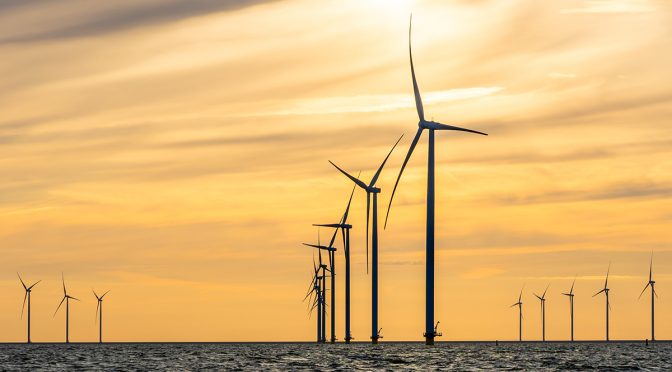Brazil’s vast coastline and strong winds make it an ideal candidate for the development of offshore wind energy. Energy planning agency EPE estimated offshore wind potential along Brazil’s coast at 700GW, while the World Bank suggests a theoretical potential of 1,200GW. Companies such as Shell, Corio, Iberdrola and TotalEnergies have also expressed interest in taking advantage of this promising sector.
Petrobras, the Brazilian state oil and gas group, has announced its bold ambition to become the leading player in Brazil’s offshore wind energy sector. The company intends to develop an additional 23 GW of offshore wind capacity in the country, solidifying its commitment to renewable energy and sustainable development.
To achieve this goal, Petrobras has filed applications with Brazil’s environmental protection agency, Ibama, outlining plans for offshore wind projects in ten different regions across the country. This marks a significant change as the company enters the offshore wind sector independently, in addition to its ongoing collaborations, including the partnership with Norwegian oil group Equinor.
Jean Paul Prates, CEO of Petrobras, highlighted the importance of this initiative and stated: “This represents Petrobras’ effective entry into the offshore wind energy segment. “We are preparing the company to become the largest developer of wind energy projects in Brazil.”
The areas designated for potential offshore wind projects cover seven regions in the northeast, two in the southeast and one in the south of Brazil. It should be noted that one of the key projects is located off the coast of Rio de Janeiro, where floating wind turbines will be used in waters with depths greater than 100 meters. Petrobras has been collaborating with the University of Sao Paulo to test innovative floating wind technology, using a four-column semi-submersible platform. This technology offers significant advantages for construction and installation, allowing assembly in port and towing to the installation site without specialized vessels.
Petrobras sees the feasibility of floating wind structures as an opportunity to integrate and supply energy to its production platforms, thus improving overall energy efficiency. However, it is important to note that the presentations before Ibama do not guarantee licenses for these projects. The regulatory framework for offshore wind energy in Brazil is currently undergoing political negotiations, which will determine the viability and approval of Petrobras’ offshore wind developments.
In addition to offshore wind energy, Petrobras has also announced plans to invest in the manufacturing of onshore wind turbines, aligning its strategy with both onshore and offshore renewable energy opportunities.
TotalEnergies recently signed a memorandum of understanding with Petrobras and Casa dos Ventos to explore several renewable energy projects in Brazil, including onshore and offshore wind, solar and low-carbon hydrogen initiatives. This partnership highlights Brazil’s attractiveness as a renewable energy hub and brings the country one step closer to realizing its renewable energy potential.
Overall, with Petrobras’ ambitious offshore wind plans and its collaborations with global energy giants, Brazil is well positioned to become a major player in the growing offshore wind industry.
Sources:
– Petrobras unveils huge offshore wind energy plans in Brazil | NS Energy
– Brazil targets 25 GW of offshore wind power by 2035 | Windpower Monthly

